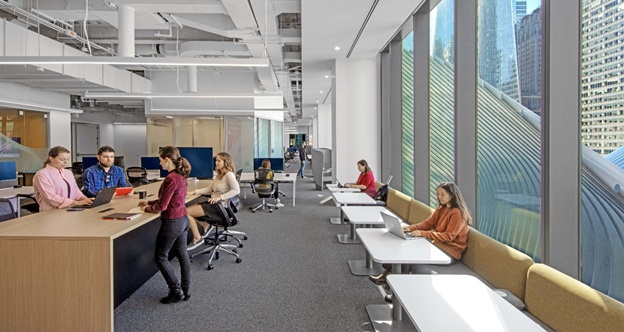
by Adam Stoltz
Google the term “post-COVID” and you’ll find 45 million results advising you on everything from the long-term health effects of the virus to its future impact on more nuanced topics like fashion and the arts. For facilities managers, however, the term often means one thing: the time (probably this year) when businesses once again open their offices to employees.
Scroll through these pieces on return to office, and you’ll find loads of practical advice on how to prepare the workplace to mitigate risk and infection. Largely absent, though, is what I believe is a far greater challenge: addressing the new needs and expectations of the post-COVID employee.
If we’re not focused on the new demands of workers, none of the facilities-related strategies implemented this year will matter. Why? Because people simply won’t show up.

COVID-19 has proven that remote work is not only efficient—with productivity and employee satisfaction exceeding nearly all expectations—but it is also feasible for a great many more employees than ever imagined.
Prior to the pandemic, roughly 4 in 10 U.S. employees performed some of their work remotely. By April of 2020, half of all U.S. employees were not only working remotely, they were doing it full-time. Among office workers, that percentage was much higher, reaching to more than 75 percent among many of my clients. Businesses would be fooling themselves to think that these liberated, happier and more productive workers are simply going to return to the office voluntarily. And companies that try to force the issue or offer the parental dictate “because I said so” are likely to encounter significant pushback.
At the same time, we know there remains a need for the office, and just because you can work from home, doesn’t mean you should. While a great number of employees do work successfully remotely, there are some whose jobs require them to be on site or who prefer to work in the office for a variety of reasons: routine, camaraderie, the inability to work effectively from home, etc.
The office has value for other reasons, too. Nearly 9 in 10 employees surveyed by PwC believe the workplace is important for collaboration. Ninety-five percent of executives responding to the same survey viewed the office as crucial to preserving and promoting office culture, identity and a sense of belonging.
How then should businesses and their facilities respond to a new reality in which a great many employees view the office as an option for work but no longer a requirement? At the same time, how do we ensure that the workplace efficiently and effectively supports work and serves as a hub for culture and collaboration?
To me, it comes down to three factors: 1) embracing flexibility, 2) understanding the new needs of employees, and 3) creating equity between in-person and distributed coworkers.
